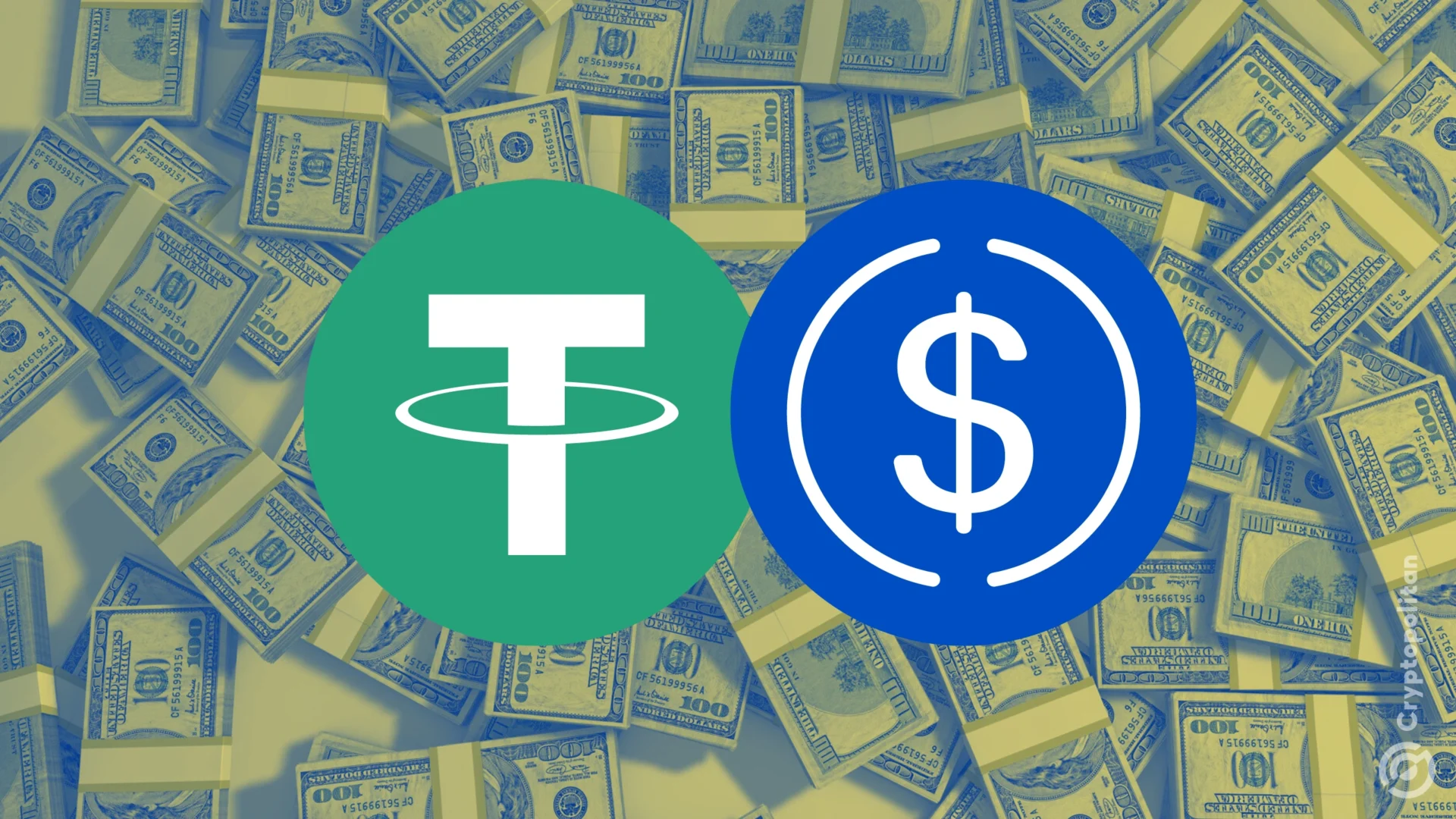Countries in Western, Northern, and Central Europe drove crypto adoption through the growth of stablecoins. Based on Chainalysis data, the region had year-on-year growth of 44%.
Western, Northern, and Central Europe made up 21.7% of stablecoin activity worldwide. Crypto adoption in the region reflected the general trend of dollarization, where dollar-pegged tokens replaced Bitcoin (BTC) and Ethereum (ETH) in settlements.
The region had a turnover of $987.25B in the 12 months to June 2024 for all cryptocurrencies. Of that inflow, $422.3B was in the form of stablecoins. The European pace of growth was 2.5 times bigger compared to the US for transactions under $1M, show Chainalysis data. On average, European countries saw $10-$15B in monthly stablecoin flows.
The European performance coincided with the growth of stablecoins, which added 30B tokens to their supply for the 12-month period. In the last week, stablecoin supply diminished slightly to 159.7B tokens.
European traders buy more stablecoins with their fiat
Stablecoins took over 52.36% of all crypto transactions on average, not slowing down even after the March-April bull market. Stablecoin usage on-chain remained independent from crypto trading trends.
The UK remains the biggest crypto economy in Europe, though outside the Euro Area. The country received $217B in onchain value. The UK is also ranked 12 in the global crypto adoption index by Chainalysis, surpassing all countries in the Euro Area. While the Euro Area and Western Europe have good banking coverage, stablecoins remain more agile and offer faster settlements, and are not limited to counterparties in almost all other countries.

The UK offered a different regulatory set, while the Euro area became more strict in its stablecoin requirements. Despite this, Germany, France, Netherlands, Spain, and Italy made up a large percentage of on-chain and stablecoin activity. Eastern Europe is growing its share of professional investor transactions, while Western Europe dominated in large-scale transactions at the scale of financial institutions.
The region also saw a revival of retail and professional Bitcoin (BTC) transfers, moving $212.3B in on-chain value. Europe lags behind the USA in professional and retail BTC transactions under $1M, but the growth in the past year reached 75%. The growth of stablecoin usage also surpasses the US market.
European users also directed their fiat purchases to stablecoins, while US investors bought more BTC. Additionally, European altcoin usage surpassed BTC and ETH. The Euro had a role in stablecoin purchases, while the dollar was most widely used in directly acquiring BTC. One of the reasons is that the Euro-denominated markets are smaller, and the crypto market is mostly dollarized.
Stablecoins bought with euro are then used to acquire other assets. Western Europe was the fourth-largest market for DeFi growth, while Eastern Europe showed even more robust growth. Stablecoins are becoming more important as stabilized collaterals for lending and as basis for liquidity pools. Traffic to DEX has been increasing from the region, helping boost the demand for stablecoins.
Stablecoins serve as fintech and e-commerce tools
European users adopted crypto stablecoins as an addition to fintech and payment products. The e-commerce merchant market in the UK also saw rapid growth of 58.4% annually, becoming the biggest driver of stablecoin usage.
European stablecoin holders used the tokens to top up trading or sports betting accounts. The stablecoins were also used for direct settlements or invoice payments, as well as for cross-border remittances to other regions.
The BVNK settlement platform is one of the busiest gateways for European stablecoin users, with the goal of accelerating global payments. Payhound is also driving traffic into stablecoins, especially tied to the sports betting industry as a Malta-based payment processor.
The stablecoin growth until June does not reflect the Markets in Crypto Assets regulation, introduced in July. MiCA limited the usage of Tether (USDT), leaving Euro Area users with the challenge of moving into other stablecoins like USDC.
However, USDT usage is only banned for exchange products, so user transfers and other forms of payment may continue. Some of the payment processors, however, may have to alter their payment gateways to reflect the limitations of MiCA. The UK market, now outside the EU requirements, may absorb some of the crypto finance while remaining compliant.





